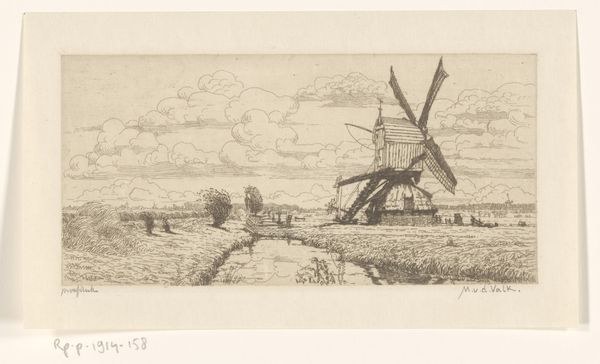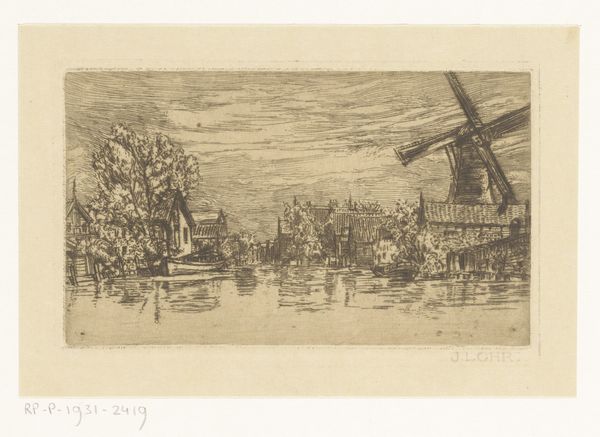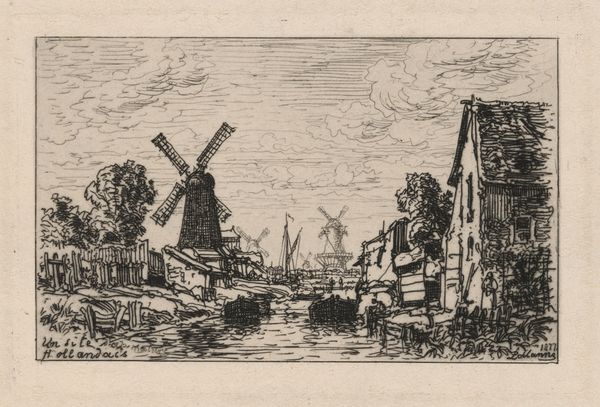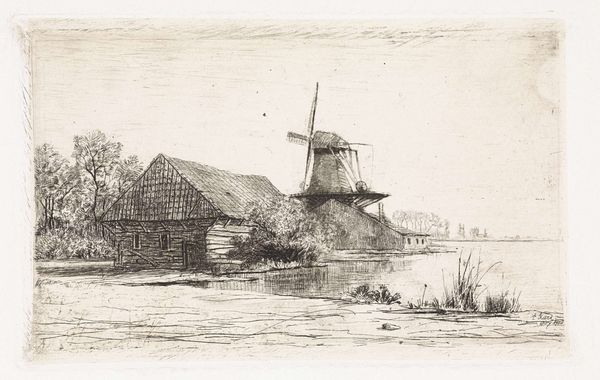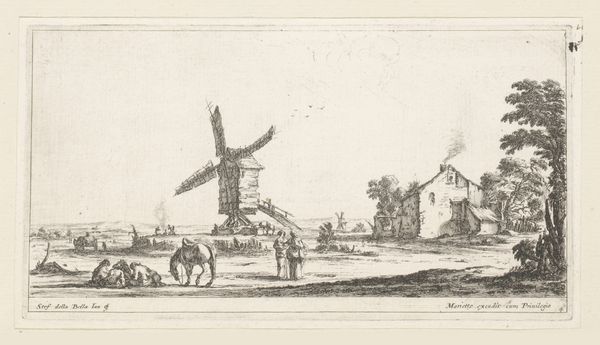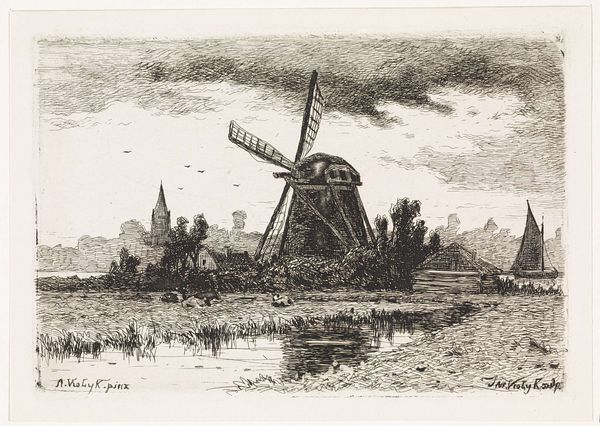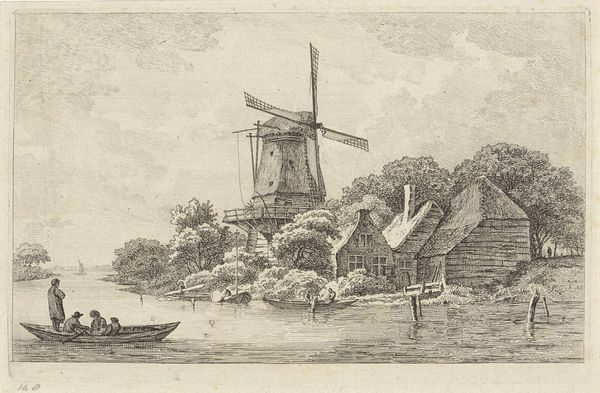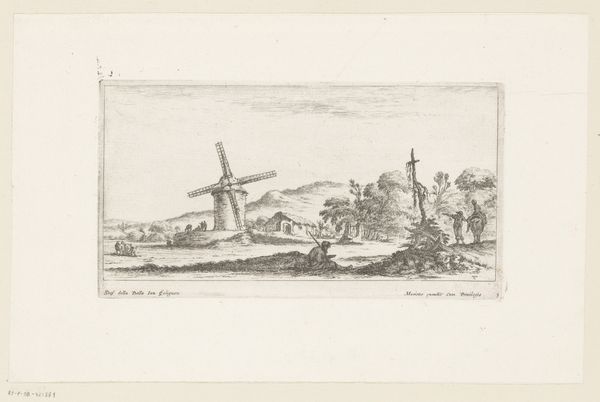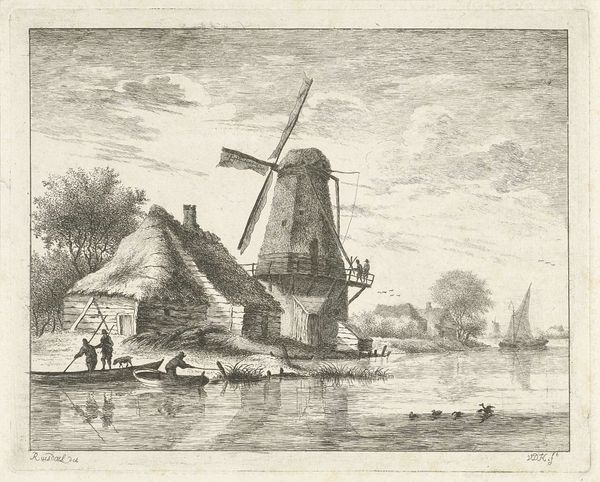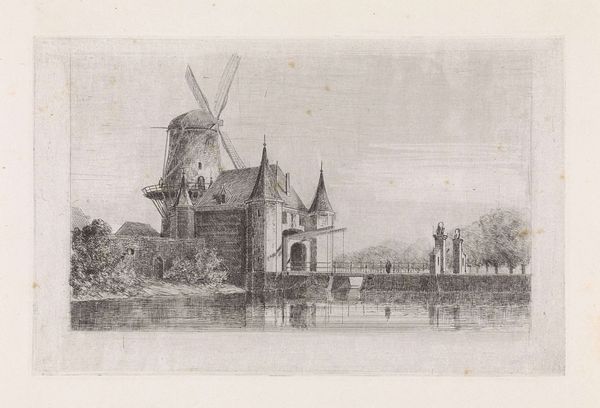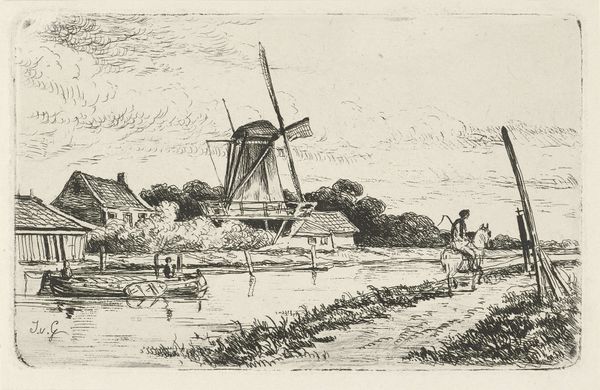
print, engraving
#
dutch-golden-age
# print
#
old engraving style
#
landscape
#
cityscape
#
engraving
Dimensions: height 80 mm, width 142 mm
Copyright: Rijks Museum: Open Domain
Curator: Looking at "Gezicht op de Morebleek buiten Amsterdam," a print made by Johannes de Ram between 1668 and 1693, one immediately appreciates its stark compositional clarity. Editor: Yes, and the mood! There's a palpable sense of tranquility. Despite being a cityscape, or perhaps a 'country-cityscape', there's something almost melancholic about the scene. The gray of the engraving highlights themes of industrial landscapes on water, yet there are natural themes surrounding it too, like the river, people and trees. Curator: The engraving itself, that web of intricate lines, creates textures suggesting rough brickwork against smooth water, demonstrating sophisticated deployment of artistic tools. Notice how de Ram controls value and tonal depth to suggest recession, even within a relatively shallow picture plane. Editor: Symbolically, the windmill feels pivotal. In the cultural imagination, windmills signify labor, industry, certainly, but they're also about harnessing natural power. And here, in relation to the urban structures nearby, it becomes a symbol of Holland itself and a time period: The Dutch Golden Age. Curator: Indeed. And it's through de Ram’s skilled orchestration of light and form, we glean deeper meaning of place—an integration between commerce and nature, typical to dutch iconography. How would you say that's explored in this specific depiction? Editor: There is a very direct combination through his placement and scaling. Notice the figures populating the landscape, they become both observers, people who use it, while nature thrives at the periphery, which is the true continuity to all of this. Curator: So, in the composition itself, the engraving articulates the essence of landscape and industry intertwined? Fascinating. The strategic line work defines the narrative, imbuing de Ram's composition with meaning and significance. Editor: Precisely, and the narrative here invites viewers into the visual landscape of that time and place. It connects to collective cultural memory by showing progress through that interweaving that we explored. The people depend on the products produced to grow their city. It’s a striking image with remarkable staying power.
Comments
No comments
Be the first to comment and join the conversation on the ultimate creative platform.
